The culture of Sikkim is one of the most unique and colorful combinations of well-preserved age-old beliefs, customs, and traditions. Since the ancien
The culture of Sikkim is one of the most unique and colorful combinations of well-preserved age-old beliefs, customs, and traditions. Since the ancient ages, the tribal communities of Nepalese, Lepchas, and Bhotiyas have called Sikkim their home. It is a cultural melting pot and a vibrant mosaic of various cultures that have managed to occupy the life of the locals over time. The Sikkimese population expresses their traditions and beliefs through various folk dances, musical performances, and rituals that are unique to the region. Through these folk traditions, the people here have managed to retain their cultural aspect. From the way they dress up to the way they go about their day-to-day life, the folks of Sikkim are deeply rooted in their rich cultural heritage. A lot can be learned about Sikkim through their folk dance. Here are the folk dances of Sikkim:
List of the 12 Traditional Folk Dance of Sikkim
1. Lu Khangthamo Dance
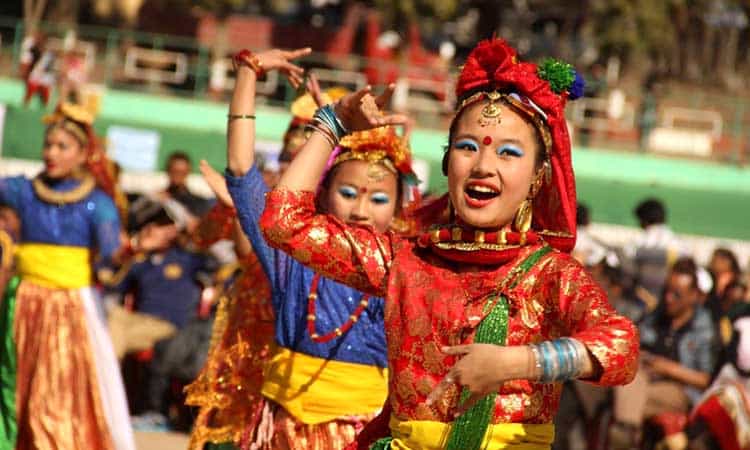
Lu Khangthamo is a traditional Bhutia Folk Dance whose roots can be traced back centuries ago. This special, traditional dance is performed to celebrate and thank the local gods and goddesses worshipped by the local Bhutiya Folks of Sikkim. The Bhotiyas have been residing on the hills of Sikkim since time immemorial and have continued to preserve their culture over time. This dance form is enjoyed by people of all age groups in Sikkim. The dance performers don their traditional ornaments and clothes and do this dance to mark special occasions ranging from New Year celebrations to housewarming parties. The song is performed against the musical backdrop of traditional songs and music.
2. Rechungma Dance
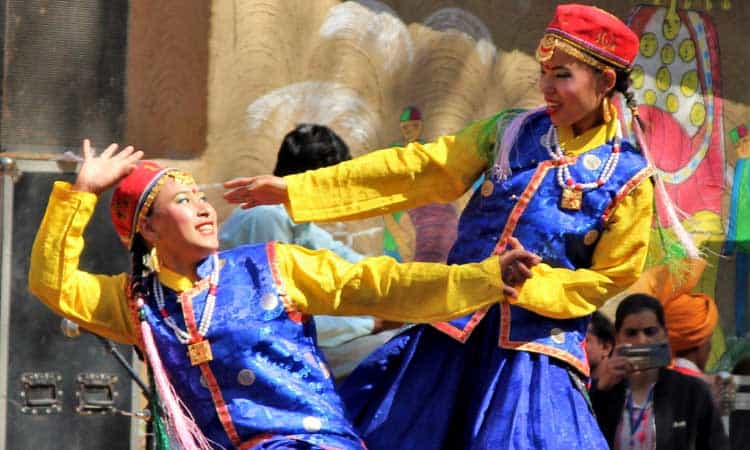
The Sikkimese folk makes use of their traditional dancing styles and musical performances to celebrate almost every occasion. This is a typical Sikkimese dance that is performed to show gratitude to the gods and goddesses and ask for their continued blessing, positivity, good wishes, and health. This dance is performed in groups of people during any and every occasion like childbirth, marriage, and other such social gatherings. The dance is extremely vibey and vibrant which sets the foot tapping and makes the audience want to join in. since it is performed on almost every occasion, Rechungma is one of the most popular dance forms in Sikkim that continues to capture the attention of everyone.
3. Maruni Dance
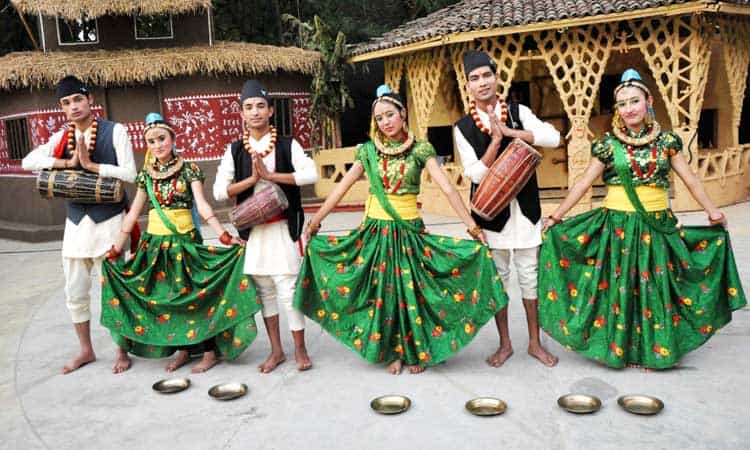
Sikkim is home to a majority of the Nepalese population whose culture, beliefs, and traditions have beautifully amalgamated with the existing culture of Sikkim. Maruni is one of the most famous Nepalese dance forms which is also one of the oldest in the region. This dance form is performed mainly during major festivals like Diwali and special occasions like marriage functions. Maruni dance performers mainly belong to the people of the Magar community and it is also popular among the people of Darjeeling, Assam, and Bhutan. The dancers are dressed elaborately in colorful traditional costumes and ornaments to commemorate the victory of good over evil. Accompanying the dancers is the grand Nepali Naumati Baja orchestra.
4. Tamang Selo Dance
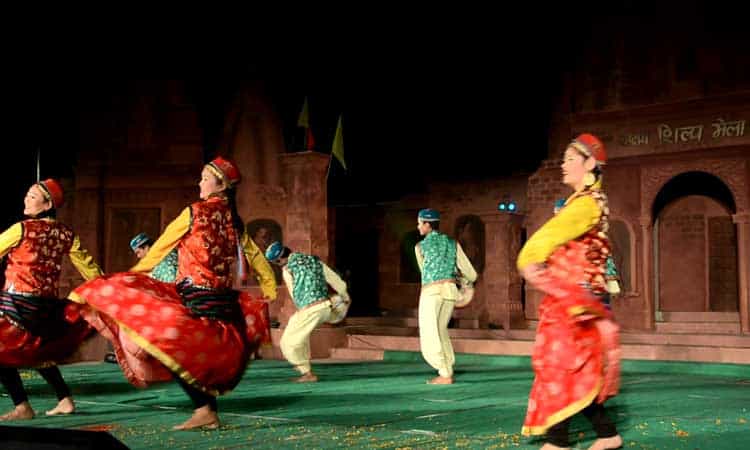
Named after the Tamangs of the Nepali community who have been residing in the mountains and the plains of the Himalayas, this ancient dance form is a major part of their culture. The Tamang Selo dance is performed along with the rhythmic sound of the Damphu which is a traditional handheld musical instrument. Due to the use of this instrument, the dance form is also sometimes referred to as Damphoo dance. The dance represents fun and happiness at its peak and it is believed that even the saddest will burst into a beautiful smile on witnessing this dance. This feel-good factor is associated with the reason behind this dance form being one of the most popular folk dances in the Nepalese community.
5. Limboo or Subba Folk Dance
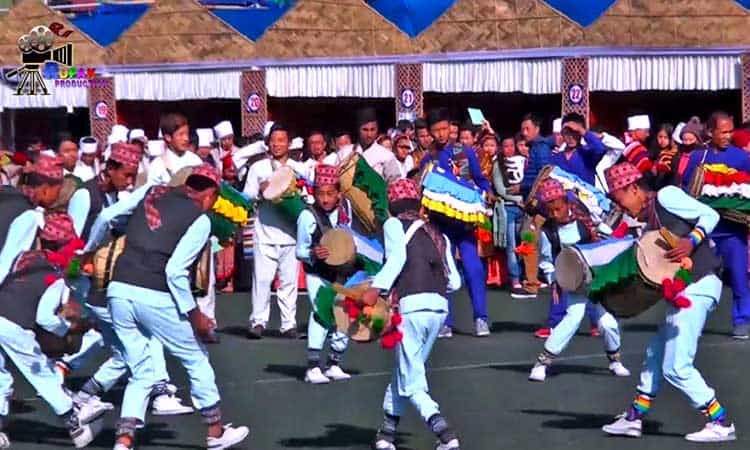
Limboo or the Subba folk dance is one of the most well-kept traditional folk dances in Sikkim. The dance’s roots can be traced back to the tribal folks of the Limboo community which is one of the major tribes of the eastern Himalayan region. Also known as Chyabrung, this folk dance is done in a smooth synchronized manner and is mainly performed by the male dancers of the community accompanied by the rhythmic beating of the drums. The traditional musical instrument is wrapped around the neck of the dancers. The drum is beaten with a palm on one side and a stick on the other side. The dance comprises elaborate footwork where the rhythmic music makes it a treat to watch.
6. Yak Chham and Singhi Chham
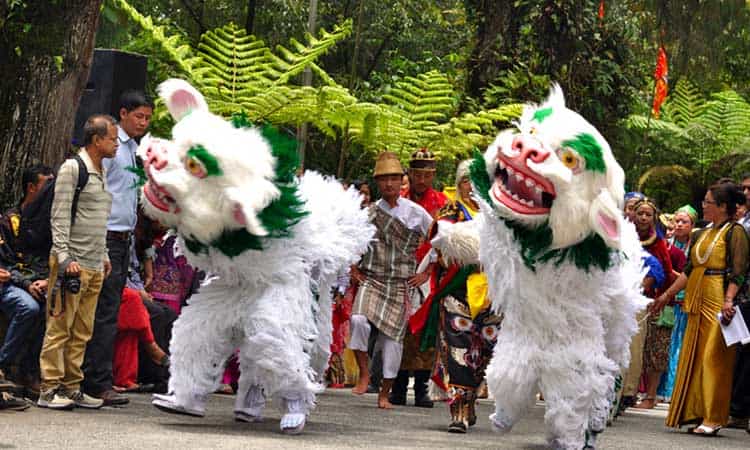
Yak Chham or the yak dance is an Asian folk dance that is performed widely in Sikkim. As the name suggests the dancers involved in this dance impersonate a yak along with a man mounted on top of it. The dancer also wears a mask representing the family members that are believed to have discovered the yak with the help of magical bird thousands of years ago. The Chham in Yak Chham describes the ‘religious form of dance’. It is also done as a tribute to the yak animal, a crucial animal that is a source of livelihood for the people living on the hills, especially in the high-altitude regions. The Singhi Chham is another important Sikkimese dance form that is linked with the famous 5 peaks of mount Khangchendzonga.
7. Mask Dance
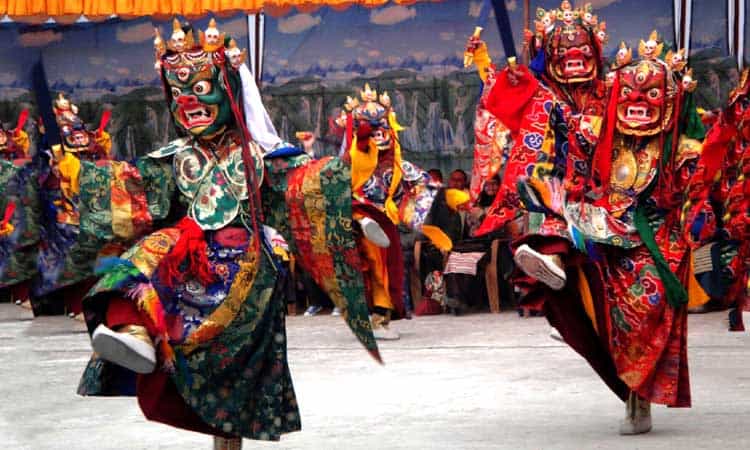
The traditional mask dance is so famous in Sikkim that it has become synonymous with the state. Many of you may have seen various pictures and videos of this dance performance in various monasteries. This dance is divided into various types depending on the monastery and season they are being performed which include: Enchey Chaam, Rumtek Chaam, and Gouthar Chaam. The Counter Chham is performed 2 days before the Losar festival which is celebrated in February. The dance represents the 8 holy signs of Guru Rimpoche. The Chham dance is performed by the llamas of the monastery, in the courtyards to mark some special or an important holy occasion. The beauty of this dance is so alluring that it invites a large group of locals as well as a tourist audience.
8. Chutkay Dance
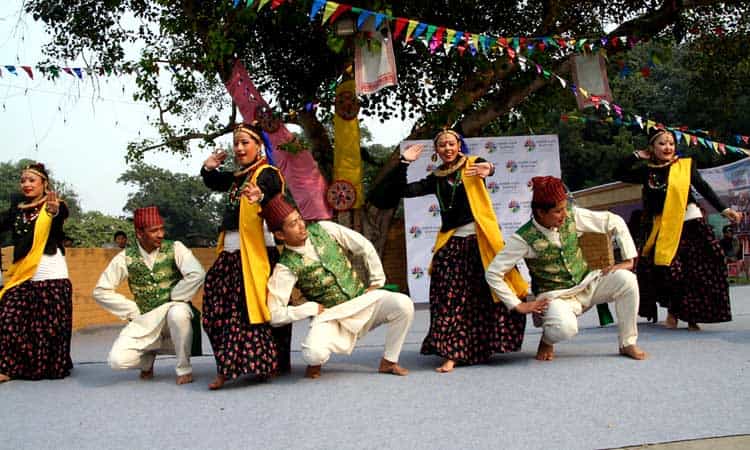
Chutkay is another one of the most famous Nepali dances in Sikkim. Performed by both men as well as the women folks here, the Chutkay dance form is unique in every sense. It is a group romantic dance that aims at creating an aura of love, happiness, and positivity. The dancers perform with great enthusiasm and happy expressions which livens up the ambiance with a very joyous feeling. Due to its style and happy music, the dance marks happy occasions like the harvest season and other positive festivities. Other than the dancers, the audience is left with a happy feeling.
9. Chu Faat Dance
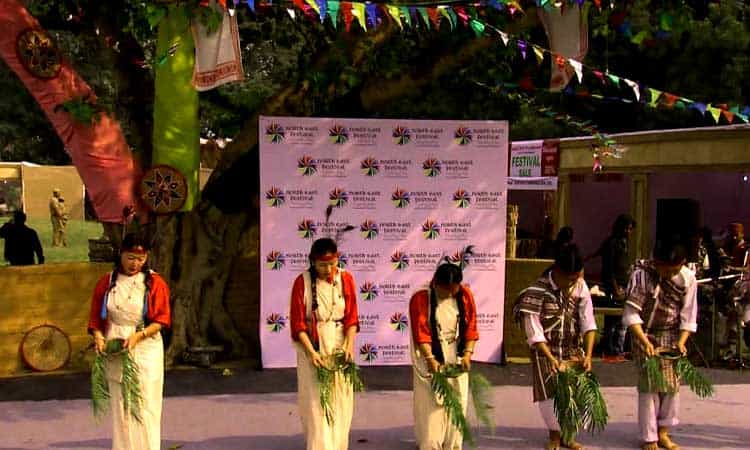
Chu Faat’s dance form is one of the most endearing and beautiful dance forms of Sikkim. Mainly performed by the people of the Lepcha tribe, the dance mainly takes place during the Pang Lhabsol Festival. The term Chu means ‘snow-clad mountains’ and Faat means ‘to worship. The dance is performed on the 15 days of the 7th month as per the Buddhist calendar. People of the Lepcha community are nature worshippers and consider these mountain peaks as a source of their survival. They also believe that these mountains are their protectors and their providers. They display this gratitude by performing the Chu Faat dance. It is not just a dance, it is a puja Ritual.
10. Kagyed Dance
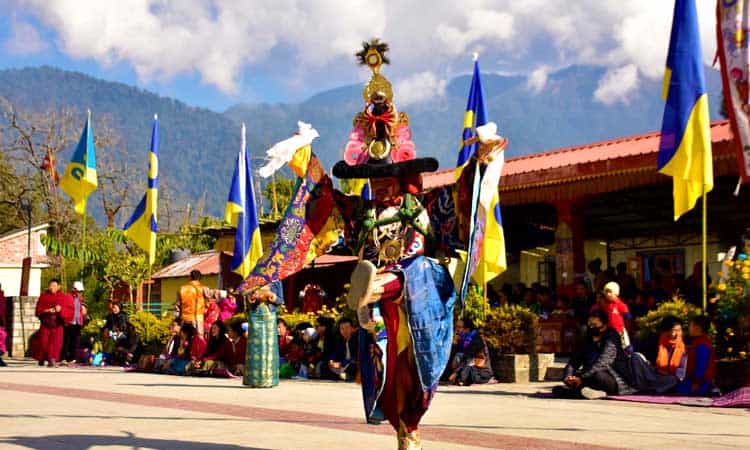
Kagyred is a type of Chaam masked dance performance that is done by the Buddhist monks and lamas of Sikkim. The dance is performed to ward off evil spirits and offer reverence to the almighty. The history of this dance can be traced back to the time of the founder of Tibetan Buddhism in Sikkim who is believed to have performed this dance to get rid of the demon and negative spirits from his holy land. Over time, a number of Chham dance variants have propped up, each of which is unique to that region. The performance involves the masked monks doing rigorous dance moves that are symbolic of the destruction of evil forces and bringing in the age of peace and prosperity.
11. Ta Shi Yang Ku Dance
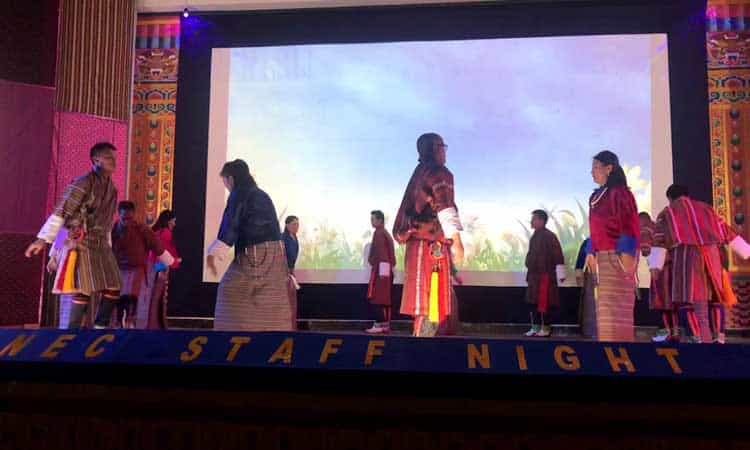
Ya Shi Yang Khu dance is another one of the most important dance forms of Sikkim. The dance is performed during special occasions and puja ceremonies to welcome good fortune to the land along with positive destiny to the people. The dance is performed mainly by the people of the Bhutia community residing in the Himalayan hills of Sikkim. According to the belief of the Bhutia community, several gods and goddesses are controlling various natural phenomena like floods, droughts, landslides, and snowfall. Since the people living on the hills depend on nature for their livelihood they do this dance to make the gods and goddesses happy so that they bless the people and the region with peace and prosperity.
12. Zo Mal Lok Dance
Zo Mal Lok is another one of the most famous dance forms of the people belonging to the Lepcha community. Agriculture forms one of the main jobs, not just in Sikkim but in most of the hilly as well as plains regions. The dance performance is done by portraying various agricultural-related actions such as sowing, reaping, and harvesting the paddy. Done by both male and female performers, Zo Mal Lok is a graceful performance that is done along with various traditional folk musical instruments. It can be defined as a regional happy dance which is further enhanced by the partaking of everyone including young and old people as well.
Frequently Asked Questions (FAQs)
Q. How Many Cultures Are There In Sikkim?
Ans. Sikkim has 3 main ethnic cultural groups that are the Lepchas, Bhutias, and the Nepalese.
Q. What Is Sikkim Notable For?
Ans. Sikkim is famous for its natural beauty, humble people, alpine and subtropical climate, delicious food, and home of the 3rd highest mountain in the world.
Q. Which Are The Best Foods Of Sikkim?
Ans. The best foods of Sikkim are Momos, Thukpa, Khapse, Wachipa, Sinki, Gundruk, bamboo shoot curry, etc.
Q. What Is The Famous Traditional Dress Of Sikkim?
Ans. Kho or Bakhu is the traditional dress of the people of Sikkim.
Q. What Is The Famous Festival Of Sikkim?
Ans. Pang Lhabsol is the famous festival of Sikkim.


COMMENTS